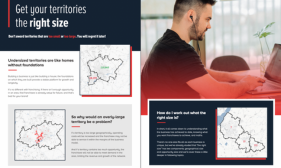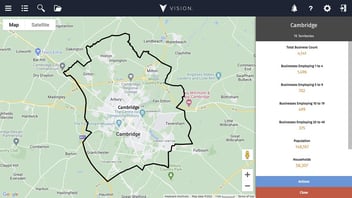July 4, 2014
Do you know just how many and where your nearest Primary and Secondary schools are? We’ve created a range of images showing the locations of schools throughout Milton Keynes, here’s some basic statistics for the area:
- Total Schools – 129
- Primary Schools – 105
- Secondary Schools – 18
- Population Aged 4 to 11 (Primary School Age) – 28,973
- Population Aged 11 to 16 (Secondary School Age) – 20,772
The first image and the statistics show just how many Primary schools there are in comparison to Secondary schools. Though there are a greater number of Primary school aged children living in Milton Keynes, there are over 5 times more Primary schools than Secondary schools but the difference isn’t the same in terms of target population. The reason for this offset is the difference in size and capacity of the two types of school. Secondary schools are much larger, holding far more students and capturing them from a far greater area.
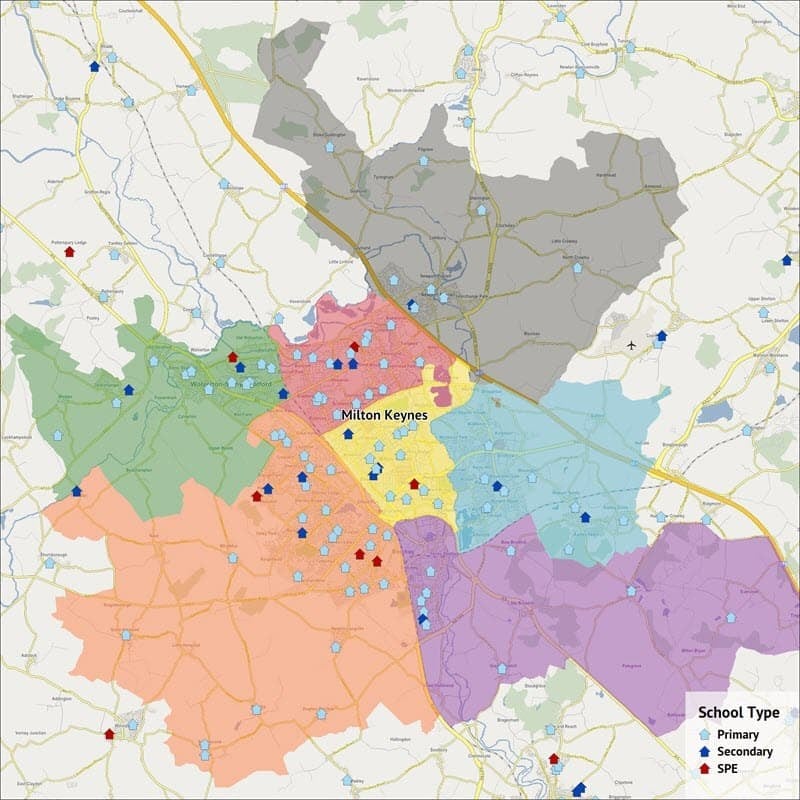
For this image, we have split Milton Keynes into its individual localities. As you can see there is at least one secondary school in each locality and depending on its size, there can be up to 3 or 4. However, you will notice that the Primary schools cover even smaller areas within these localities and will operate with only small numbers of children in comparison.
It seems as though when deciding where to send their child or children to Primary school, locality and nearness bear more importance on which school should be selected. As the children are in the main too young to travel long distances on their own, the parent has to be responsible for taking and picking the children up from school, unless it’s extremely nearby and within walking distance.
However, when it comes to Secondary school, children are now more capable of travelling to and from school, using different methods of transport i.e. bicycle, bus etc. Also, it could be argued that Secondary schools have a greater influence on your education in terms of your exams and final grades, so attending a school with a better reputation or ranking may affect the distance travelled as opposed to just going to your local Secondary school.
Food for thought: Think about how your customers reach your business or vice-versa. Putting yourself in your customers' shoes can provide great insight on how to improve performance.
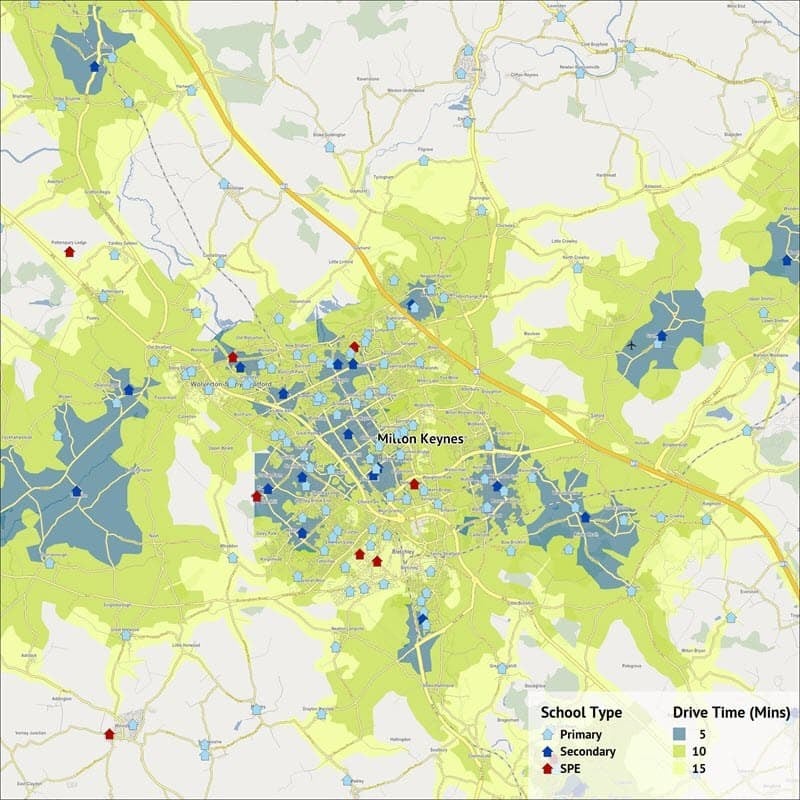
The image above shows a 15 minute drive time from each secondary school. It highlights just how close together the schools and separate localities within Milton Keynes are when travelling by car. You can actually reach a number of different schools within a relatively small drive time, giving you the opportunity to send your child or children to the school that is most suitable rather than the nearest.
However, as we know, most students at Secondary school make their own way to school either by walking or biking, at which point the travelling times become much longer if you do not attend your local secondary school as can be seen in the image below.
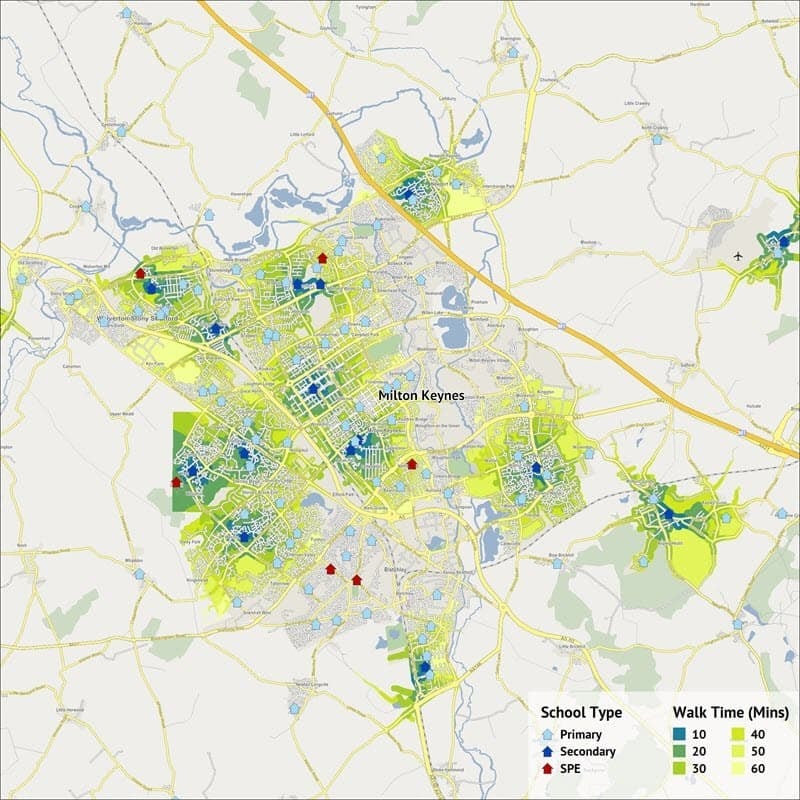
The image shows up to a 60 minute walking time; this has been created to illustrate just how long it would take to travel to an alternative school as opposed to your local one. In which case, you will have to look at either biking or taking the bus.
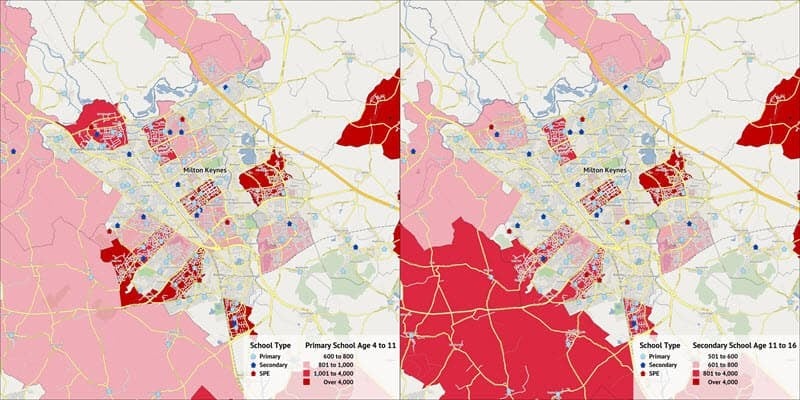
This image shows the difference in population for Primary school aged children (4 to 11) and Secondary school-aged children (11 to 16). As is to be expected there isn’t actually a great amount of difference where the two sets are located as these are typically the more populated areas within Milton Keynes. However, it does make clear that the schools are located in close proximities to areas with a high concentration of children or are generally nearby and easily accessible.
If there are any topics of industries that you are particularly interested in, please get in touch with us and if we can we will look to address this in an upcoming blog.


